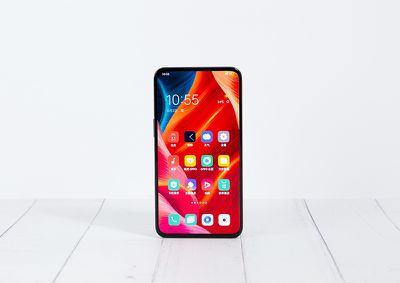Apple next year is expected to ditch the iPhone notch and adopt a punch-hole design for its front-facing TrueDepth camera array. Meanwhile, Android maker Oppo continues to publicize new iterations of its under-screen camera technology, which it has yet to feature in a shipped phone.

Oppo unveiled its first go at under-screen camera tech back in June 2019, and this is its third attempt at refining the system. According to the Chinese phone maker, the new version allows for a selfie camera to be placed under the display "without compromising the integrity of the screen."
In previous iterations, Oppo improved the camera quality at the expense of the display, by reducing the pixel density in the area of the screen that covers the camera in order to let more light in.
This time, it's taken a different tack, by shrinking the size of each pixel without decreasing the number of pixels "to ensure a 400-ppi high-quality display even in the camera area." It's also replaced the traditional screen wiring with transparent wiring material.

As a result, Oppo says users should notice "almost no visual difference" between the portion of the screen where the camera resides and the rest of the display, and to back up that claim, it has released an image of a prototype phone showing a black-and-white ebook app filling up the screen.
The company has also publicized a sample photo taken by the under-screen camera, although without several shots taken in different conditions, it's hard to judge its capabilities, and Oppo is still falling back on imaging AI algorithms to reduce some of the negative side effects typically found in under-screen cameras, such as blurry images and image glare.

Oppo hasn't said when it intends to bring a phone to market with an under-screen camera, but it won't be the first. Chinese mobile maker ZTE took that plaudit with its own fullscreen display-enabling technology appearing last year in the Axon 20 5G.
ZTE's approach effectively used two screens simultaneously – a small square one on top of the selfie camera inside the phone's main OLED display – but the square was sometimes visible when using some apps, and the selfie shots were also improved artificially by software algorithms to compensate for haze, glare, and color cast issues.
Long-term, Apple is thought to be working towards a notchless iPhone design. The notch has been a controversial design decision since it debuted on the iPhone X in 2017, and it has always felt like a stopgap on the way to an iPhone with a truly edge-to-edge display, but when that will appear – and how it will be realized – remains unknown.
This year's upcoming iPhone 13 will have a slightly smaller notch, while next year rumors suggest this will be replaced by a punch-hole design that's previously been used for some Android devices, including Samsung smartphones. Where Apple goes from there is unclear.
According to one rumor dating back to 2019, Apple has prototyped at least one iPhone with no notch, with the TrueDepth camera sensors for Face ID instead housed in the thin bezel above the display.
Given that Apple is believed to be relying on a more tightly integrated camera module to achieve the smaller notch expected on the iPhone 13, miniaturization could be one way for Apple to bring a truly edge-to-edge display to market one day while avoiding the attendant problems that come with hiding a camera under the screen, but mass-producing such technology could still be years away.























